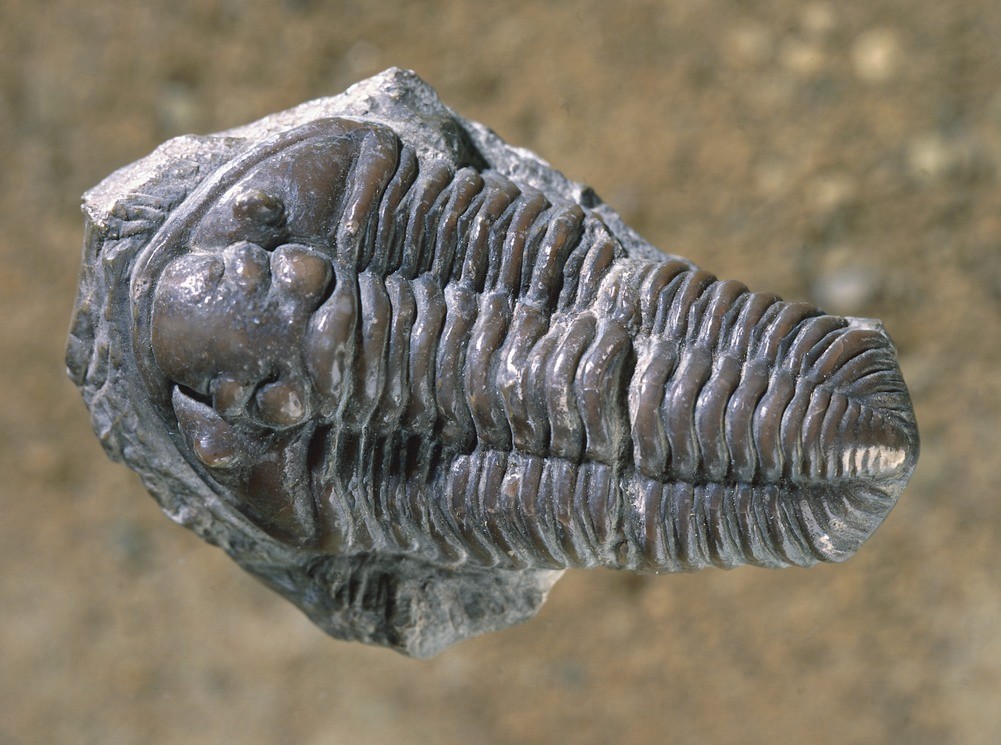| P number: | P550300 |
|---|---|
| Caption: | Calymene blumenbachii, the Dudley locust, a trilobite. |
| Description: | Calymene blumenbachii is common in Silurian rocks (420-440 million years ago) near Dudley, England. Many specimens were collected from limestone quarries during the eighteenth and nineteenth centuries and became known as the Dudley Locust, Dudley Bug or Dudley Insect. Calymene blumenbachii lived in the shallow waters of the Silurian about 417-443 million years ago. It has an elongate shape and its thorax (body) has 13 segments. The head is big, and although it has quite small eyes, the middle lobe of the head (the glabella) is large, bell-shaped and divided into segments by glabella furrows. The tail is quite short, although wide. Trilobites were arthropods, distant relatives of crustaceans and insect that live today. They lived in the seas of the early Cambrian and they became extinct with the mass extinction at the end of the Permian times. Trilobites are divided into three parts, the cephalon (the head, which is divided into the central glabella with two cheeks each side); the thorax (body, also divided into three and comprising a number of segments); and the pygidium (the tail, also divided into three). These animals often had well developed eyes, with many lenses made of calcite crystals, although others were blind. Some trilobites swam, most scurried about on the sea floor and yet others burrowed in to the sand on the sea floor |
| Photographer: | Unknown |
| Copyright statement: | Unknown |
| Orientation: | Landscape |
| Size: | 423.10 KB; 1001 x 745 pixels; 85 x 63 mm (print at 300 DPI); 265 x 197 mm (screen at 96 DPI); |
| Average Rating: | Not yet rated |
| Categories: | Best of BGS Images/ Fossils |
Reviews
There is currently no feedback

